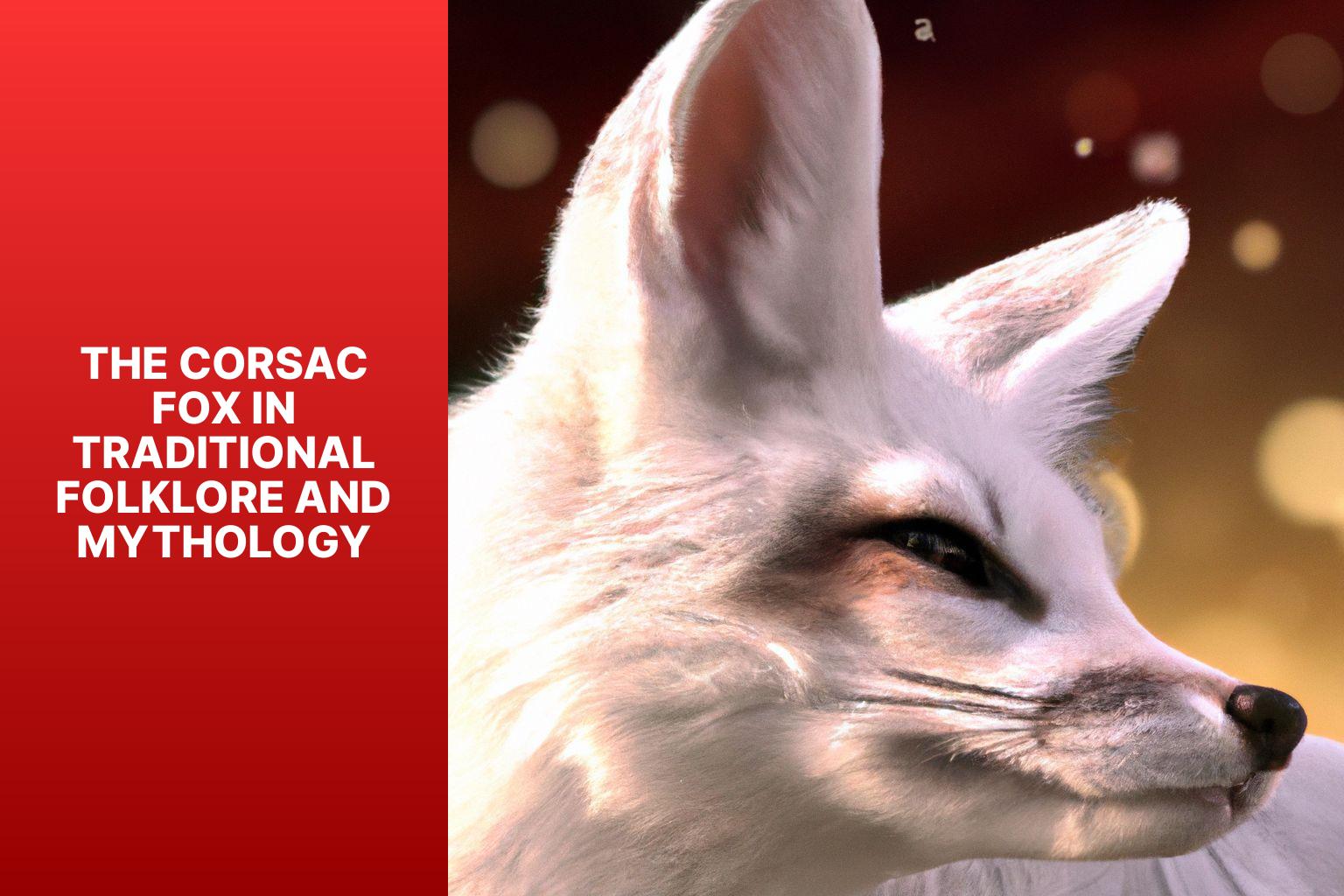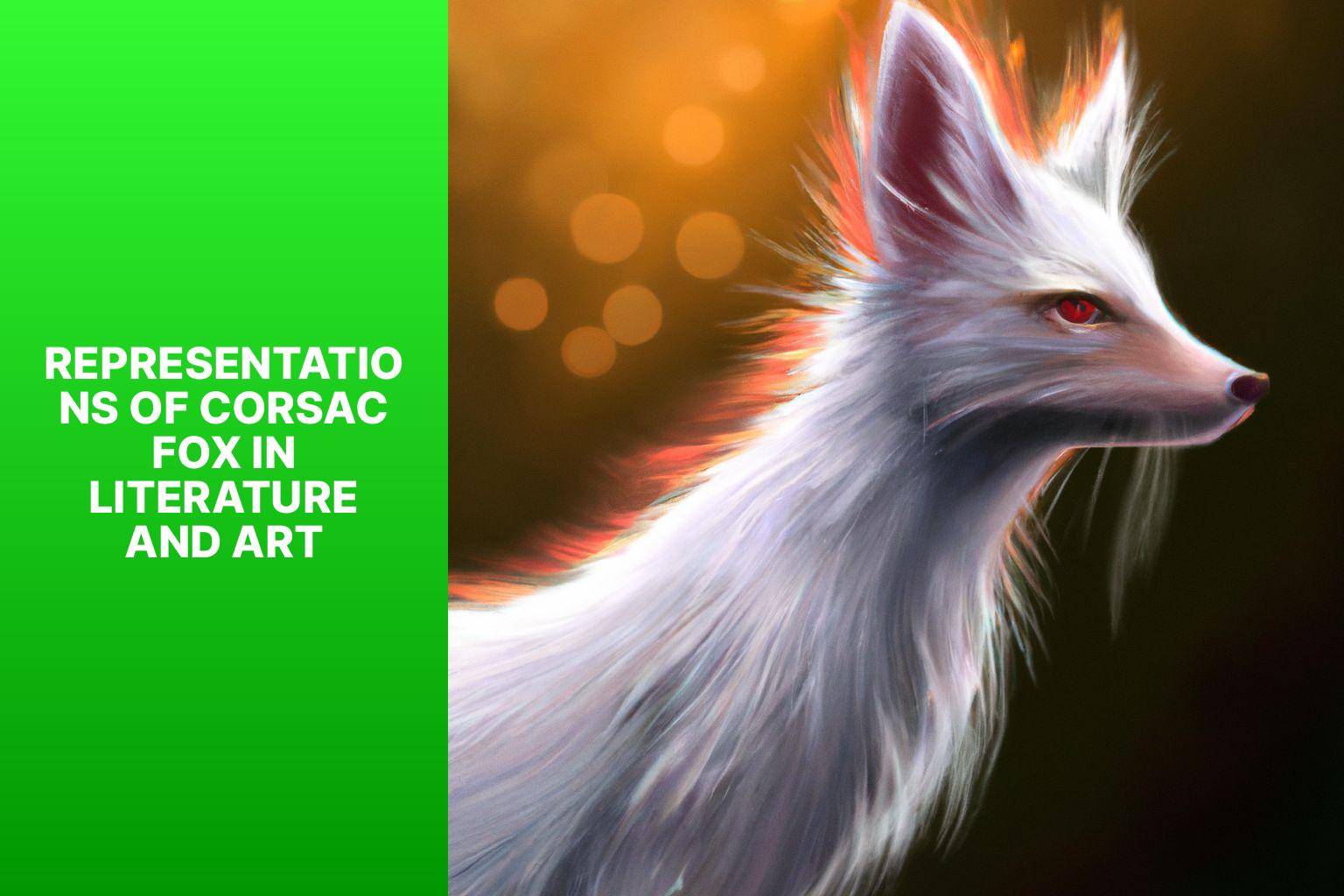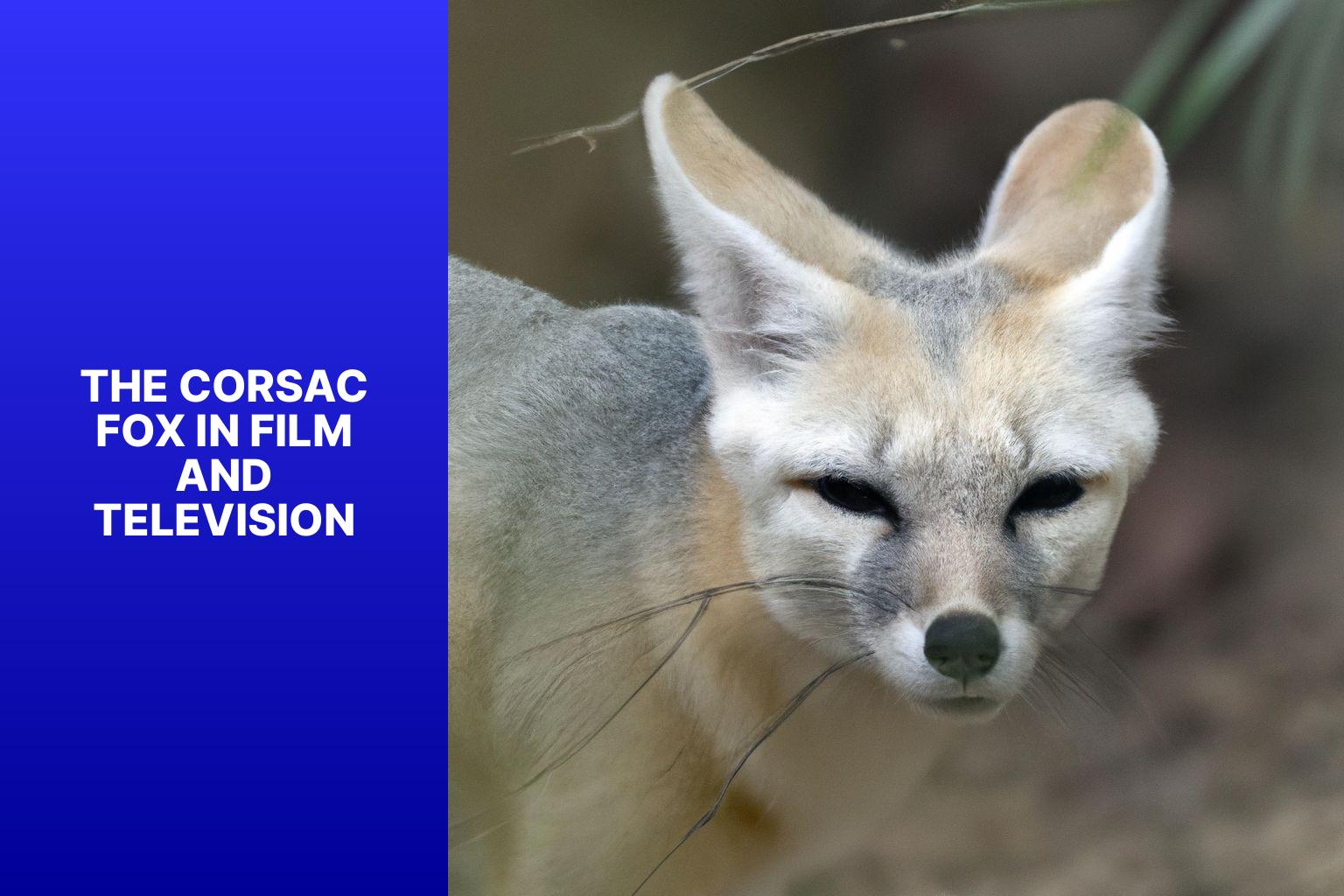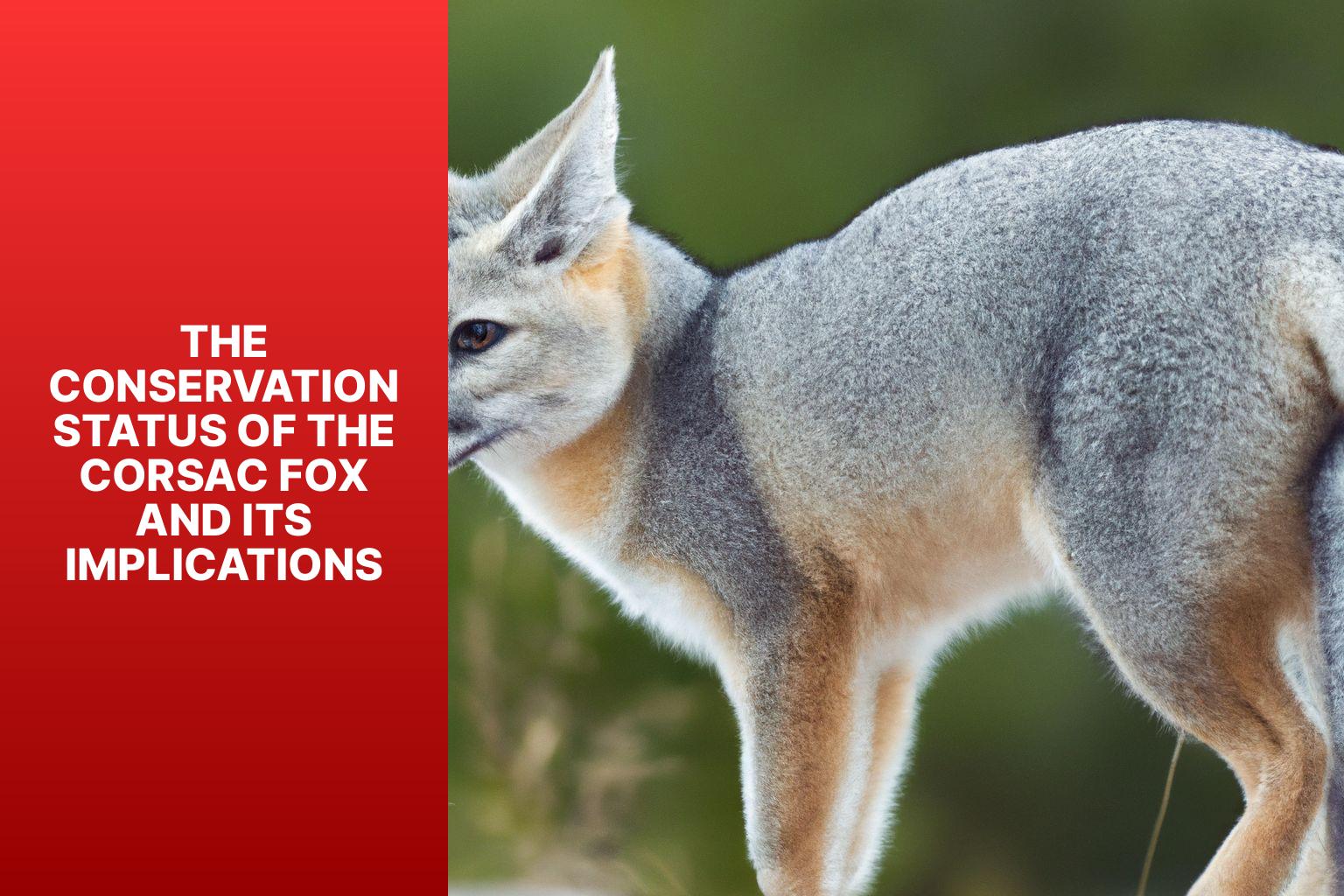The Corsac Fox, also known as the steppe fox or desert fox, has captivated the imagination of people around the world and found its place in various forms of popular culture. From literature to art, film to folklore, the Corsac Fox has left an indelible mark and continues to be a beloved creature in the collective consciousness of society.
Before delving into its representation in popular culture, it is important to understand the Corsac Fox itself. This small fox species is native to the steppes and deserts of Central Asia. Known for its stunning appearance and unique characteristics, the Corsac Fox possesses a beautiful sandy or grayish coat with a contrasting white underbelly. Its bushy tail and large ears are distinct features that aid in adapting to its rugged surroundings.
In terms of habitat and distribution, the Corsac Fox can be found across a wide range of arid landscapes, such as grasslands and semi-deserts. Its range extends across countries like Mongolia, China, Kazakhstan, and Russia. Being highly adaptable, the Corsac Fox has successfully carved out a niche in these challenging environments.
The Corsac Fox also plays a significant role in ecosystems where it resides. As an opportunistic omnivore, it feeds on a variety of prey, including small mammals, birds, insects, and fruits. Its presence in the food chain helps maintain ecological balance by regulating populations and contributing to seed dispersal.
Beyond its ecological importance, the Corsac Fox holds a special place in traditional folklore and mythology. In indigenous cultures of Central Asia, the fox is often associated with cunning and trickery, and tales featuring the Corsac Fox are woven into the tapestry of storytelling traditions. These stories not only entertain but also convey moral lessons and cultural values.
The Fascinating Corsac Fox has also made appearances in literature, art, and photography. In children’s literature, it serves as a lovable character, teaching valuable lessons about friendship, courage, and resilience. Wildlife photographers have captured its beauty and grace, showcasing the animal’s unique charm and its ability to survive in harsh environments.
The Corsac Fox has made its mark in film and television. In animated productions, it is often depicted as an endearing and mischievous character. Documentaries featuring the Corsac Fox offer an intimate look into its natural behavior and provide insights into its Understanding Corsac Fox Behavior: A Comprehensive Guide.
Not only is the Corsac Fox a beloved creature in cultural representations, but it has also become a symbol in popular culture. Indigenous cultures attribute significance to the fox as a totem animal, symbolizing wisdom, adaptability, and spiritual connections. the Corsac Fox is sometimes adopted as a mascot or used as a logo, representing attributes like agility and quick thinking.
While celebrating the Corsac Fox’s cultural significance, it is crucial to address its conservation status. The Corsac Fox faces threats such as habitat loss, climate change, and hunting. Efforts to preserve its habitat and protect the species are of utmost importance to ensure its continued presence in cultural narratives.
Contents
- 1 Key takeaway:
- 2 The Appearance and Characteristics of the Corsac Fox
- 3 The Habitat and Distribution of the Corsac Fox
- 4 The Role of the Corsac Fox in Ecosystems
- 5 The Corsac Fox in Traditional Folklore and Mythology
- 6 Representations of Corsac Fox in Literature and Art
- 7 The Corsac Fox in Film and Television
- 8 The Corsac Fox as a Symbol in Popular Culture
- 9 The Conservation Status of the Corsac Fox and its Implications
- 10 Frequently Asked Questions
- 10.1 What are some examples of foxes in popular culture?
- 10.2 How are foxes portrayed in folklore and mythology?
- 10.3 Are foxes considered as symbols in any culture?
- 10.4 What is the significance of foxes in literature?
- 10.5 How are foxes portrayed in children’s stories?
- 10.6 What impact does the illegal wildlife trade have on foxes and the animal kingdom?
Key takeaway:
- The Corsac Fox is an adaptable and resilient species: Despite its harsh habitat and limited distribution, the Corsac Fox has survived and thrived in various ecosystems, showcasing its ability to adapt and endure.
- The Corsac Fox holds cultural significance: From folklore and mythology to literature and art, the Corsac Fox has captured the imagination of humans throughout history, becoming a symbol of cunning, beauty, and wilderness.
- The conservation of the Corsac Fox is crucial: As a species with a vulnerable conservation status, efforts must be made to protect and preserve the Corsac Fox and its habitat to ensure its lasting presence in popular culture and contributions to ecosystems.
The Appearance and Characteristics of the Corsac Fox
The Corsac Fox, scientifically known as Vulpes corsac, is a small fox species native to Central Asia’s steppes and semi-deserts. It has distinct characteristics that differentiate it from other fox species.
1. Size: The Corsac Fox is smaller than other fox species, measuring about 50-60 centimeters in length, with an additional 20-30 centimeters for its tail. It weighs around 4-6 kilograms.
2. Fur: Its thick fur is generally gray, blending well with its natural habitat. In winter, the Corsac Fox molts and its fur turns lighter, almost white, providing better camouflage in the snow.
3. Ears: The Corsac Fox has large ears that, along with its acute hearing, help it detect even the smallest sounds and locate prey.
4. Behavior: Corsac Foxes are primarily nocturnal, hunting at night and retreating into underground burrows during the day. They live in small family groups, consisting of a dominant breeding pair and their offspring.
5. Diet: The Corsac Fox has an opportunistic diet, feeding on various small animals such as rodents, birds, insects, and occasionally small reptiles.
Suggestions: To learn more about fox species and their adaptations, explore other species such as the Arctic Fox, Red Fox, or Fennec Fox. Consider supporting conservation efforts for foxes and their habitats by donating to or volunteering with wildlife organizations focused on these areas. This contribution aids in preserving these remarkable creatures for future generations to enjoy.
The Habitat and Distribution of the Corsac Fox
The Corsac Fox (Vulpes corsac) is a small carnivorous mammal that primarily resides in grasslands, deserts, and steppes of Central Asia, particularly in Mongolia, China, Kazakhstan, and Russia.
These foxes live in arid and semiarid regions, enduring temperatures ranging from -40 C to 40 C. They prefer open areas with sparse vegetation like steppe grasslands and desert scrublands.
Corsac Foxes are skilled diggers, creating burrows in sandy or loamy soils for shelter from harsh weather and predators.
Corsac Foxes have a wide distribution in their native territory. In Mongolia, they can be found in both high-altitude and low-altitude areas. In China, they are present in the northern and western regions, while in Russia, they are distributed in the southern Siberian region.
The population density of Corsac Foxes varies depending on prey availability, water sources, and suitable habitats. Some areas have higher concentrations of these foxes, while others have fewer.
The Role of the Corsac Fox in Ecosystems

Photo Credits: Foxauthority.Com by Bruce Allen
The Corsac Fox, scientifically known as Vulpes corsac, plays a crucial role in maintaining the balance of its ecosystems. These small foxes are primarily found in the steppes and semi-desert regions of Central Asia. They perform various significant functions that contribute to the overall health of their habitats:
-
Food chain regulation: As both predators and prey, Corsac Foxes play a vital role in controlling the populations of small mammals such as rodents and hares. This predatory behavior is essential for maintaining the ecological balance.
-
Seed dispersal: Through their diet, which includes fruits, insects, and small animals, Corsac Foxes inadvertently carry the seeds of consumed plants in their droppings. This unintentional seed dispersal contributes to the biodiversity of the ecosystem.
-
Soil aeration: Corsac Foxes assist in soil aeration through their burrowing behavior. Their intricate underground tunnels serve as both shelter and contribute to better absorption of water and nutrients. This ultimately benefits plants and other organisms in the ecosystem.
-
Prey for larger predators: Corsac Foxes themselves serve as prey for larger predators, including wolves and eagles. Their presence as a prey species contributes to the energy flow and balance within the ecosystem.
In order to protect Corsac Fox populations and maintain the overall health of ecosystems, it is crucial to safeguard their habitats from activities such as habitat destruction and poaching. Increasing awareness and educating people about the significance of these foxes in ecosystems can foster a sense of responsibility towards their conservation.
The Corsac Fox in Traditional Folklore and Mythology

Photo Credits: Foxauthority.Com by Robert Johnson
Throughout cultures and mythologies, The Corsac Fox in Traditional Folklore and Mythology plays a prominent role as a symbol of cunning, transformation, and intelligence.
From Mongolian tricksters to Korean shape-shifters, the Corsac fox is revered for its magical powers and abilities.
In Japanese folklore, the Corsac fox is closely linked with the god Inari, representing prosperity and fertility.
Tibetan tales portray the Corsac fox as a creature associated with both good and evil spirits, symbolizing transformation.
In Russian folklore, this clever fox is often portrayed as wise, outsmarting others with its resourcefulness.
The prevailing theme across these enchanting stories is the Corsac fox’s exceptional intelligence and its ability to navigate challenging situations with wit.
The tales celebrate the adaptability and survival instincts of the Corsac fox in harsh environments.
These diverse folklore and mythological representations paint a vivid picture of the Corsac fox’s cultural significance and enduring legacy.
Representations of Corsac Fox in Literature and Art

Photo Credits: Foxauthority.Com by Jacob Thomas
Representations of the elusive Corsac Fox in literature and art are a delightful blend of imagination and reality, enticing both children and wildlife enthusiasts. Journey into captivating tales where the endearing Corsac Fox takes center stage in children’s literature. Explore stunning wildlife photography that captures the grace and beauty of this fascinating creature in its natural habitat. Get ready to be enchanted as we delve into the world of Corsac Fox in literature and art.
Corsac Fox in Children’s Literature
The Corsac Fox is a fascinating character in children’s literature, captivating young readers with its enchanting stories and unique characteristics. These literary works skillfully engage readers by showcasing the Corsac Fox’s behaviors and appearance.
In these narratives, the Corsac Fox actively participates in adventures, allowing children to explore its habitat and learn about its adaptations. By introducing this Corsac Fox in children’s literature, it fosters a love for wildlife and educates young readers about conservation and biodiversity.
Children’s literature featuring the Corsac Fox cultivates a sense of wonder and curiosity about the natural world. Authors skillfully integrate factual information, enhancing children’s understanding of this remarkable animal. They vividly describe the Corsac Fox’s physical appearance, promoting visual recognition and appreciation.
These stories highlight the Corsac Fox’s agility and keen senses, helping young readers comprehend its abilities. Through engaging narratives, children’s literature provides a captivating glimpse into the Corsac Fox’s life, fostering empathy and respect for wildlife.
Corsac Fox in Wildlife Photography
When it comes to wildlife photography, the Corsac Fox is a captivating subject. Incorporating Corsac Fox in wildlife photography, it is important to research the behavior, habits, and habitat of the Corsac Fox to anticipate their movements and capture them in their natural environment. It is recommended to use a camera with a fast shutter speed and a telephoto lens to freeze the fox’s movements and capture close-up shots without disturbing them. One of the key aspects to focus on in Corsac Fox photography is the mesmerizing eyes of the Corsac Fox. It is crucial to ensure that their eyes are in sharp focus in order to capture their expression.
To enhance the visual appeal of the photographs, it is advised to take advantage of the soft and warm light during the early morning and late afternoon. This will not only add depth but also warmth to the images. Capturing the agility and playful behavior of the Corsac Fox in action will add energy to the wildlife photography. To create visually interesting photographs, it is recommended to experiment with different angles, perspectives, and compositions.
Patience is key in wildlife photography. Waiting for the perfect moment to capture that extraordinary shot is essential. It is important to respect the Corsac Fox and their natural behavior by maintaining a safe distance and not disturbing their environment. Sharing stunning photographs of the Corsac Fox can help raise awareness about these beautiful creatures and inspire others to appreciate and protect wildlife.
The Corsac Fox in Film and Television

Photo Credits: Foxauthority.Com by Kevin Campbell
If you’ve ever marveled at the clever and captivating portrayal of animals in film and television, then you won’t want to miss our dive into the world of the Corsac Fox on the big and small screens. From its charming presence as an animated character to its appearance in remarkable documentaries, we’ll explore how this elusive creature has made its mark in the realm of entertainment. Get ready to discover the Corsac Fox’s journey through the lens of animation and the captivating stories it has brought to life in documentaries.
Corsac Fox as a Character in Animation
The Corsac Fox, as a character in animation, is widely popular due to its unique appearance and intriguing behaviors. Its lively and energetic nature captivates audiences of all ages.
Whether it is in animated films or TV shows, the Corsac Fox is often depicted as mischievous and clever. Its vibrant orange fur and bushy tail make it visually enticing, and animators relish in bringing its playful antics to life on screen.
One of the notable traits of the Corsac Fox is its agility and quick thinking, which allows it to outsmart adversaries and creatively solve problems. Its resourcefulness and versatility as a character shine through its ability to adapt to various situations and environments.
The Corsac Fox’s role in animation sparks curiosity and wonder in the audience. Its interactions with other characters and the environment bring comedic relief and exciting adventures.
For fans of animated films and shows, immersing oneself in the enchanting world of the Corsac Fox can be an entertaining and delightful experience. Keep an eye out for productions featuring this captivating character.
Suggestions for further reading:
- Discover the Corsac Fox: A Guide to its Habits and Habitat
- Exploring the Role of Animals in Animated Films
- The Evolution of Animal Characters in Animation: From Realism to Anthropomorphism
Documentaries Featuring the Corsac Fox
Documentaries Featuring the Corsac Fox
– “The Secret Life of Corsac Foxes“: Explores Corsac fox behavior, hunting techniques, social dynamics, and unique adaptations for survival.
– “Corsac Fox Adaptations: Surviving in Harsh Environments with Remarkable Skills“: Follows a family of Corsac foxes in the harsh desert landscape, showcasing their ability to thrive in arid environments and their remarkable resilience.
– “Exploring the Vulpes Corsac Taxonomy“: Delves into different subspecies of Corsac foxes, their ecological significance, relationships with other species, and role in maintaining biodiversity.
In one fascinating example, wildlife filmmakers documented a group of Corsac foxes in the Mongolian steppe. They observed the foxes’ den-building process and witnessed their teamwork to protect offspring. The filmmakers captured heartwarming moments of parental care and playful interactions, shedding light on the complex social lives of Corsac foxes. This story exemplifies the captivating nature of Corsac fox documentaries, providing a deeper understanding and appreciation for these remarkable creatures.
The Corsac Fox as a Symbol in Popular Culture
The Corsac Fox, with its enchanting and elusive nature, has left an indelible mark in the realm of popular culture. In this section, we’ll embark on a captivating journey exploring the Corsac Fox as a powerful symbol. From its significance in indigenous cultures to its portrayal as a mascot or logo, we’ll unravel the many layers of intrigue and fascination that surround this magnificent creature. Get ready to delve into the rich tapestry of the Corsac Fox’s influence on our collective imagination.
Significance of the Corsac Fox in Indigenous Cultures
The Corsac fox holds great significance in indigenous cultures, symbolizing wisdom and cunning. Often depicted as a trickster figure, this adaptable and resourceful creature is both admired and revered.
In indigenous folklore, the Corsac fox is believed to possess spiritual and supernatural powers, forging a connection to the spirit world. During rituals and ceremonies, it is evoked as a spirit guide or guardian, providing protection and guidance. This remarkable animal embodies wisdom, adaptability, and spiritual connection.
To gain a deeper understanding of its importance, one can explore folklore stories and traditions, delve into books or articles on indigenous mythology, and actively engage with indigenous communities to directly learn from their rich traditions and practices.
Corsac Fox as a Mascot or Logo
The Corsac Fox is a popular choice as a mascot or logo for organizations. Its appealing characteristics and unique appearance make it a great choice. The active and alert nature of the fox, along with its elegant and sleek body, contribute to its popularity.
When used as logos, Corsac Foxes with their beautiful golden coats and distinctive black markings bring forth an image of beauty and elegance. Their sleek bodies and agile movements make them perfect symbols for sports teams, symbolizing speed, agility, and determination.
The adaptability and intelligence of the Corsac Fox make it a suitable mascot for educational institutions. Its ability to navigate different habitats and survive in harsh environments perfectly symbolizes resilience and adaptability, which are highly valued traits in academic settings.
Using the image of the Corsac Fox as a logo can enhance a company’s identity, especially if the company is involved in eco-friendly initiatives or outdoor recreation. The association of the fox with natural environments and wildlife can effectively convey a message of environmental consciousness and sustainability.
It is crucial to ensure that the portrayal of the Corsac Fox as a mascot or logo aligns with the organization’s values and goals. The representation should be respectful and accurate, highlighting the unique characteristics of the fox while avoiding misrepresentation or cultural appropriation.
The Conservation Status of the Corsac Fox and its Implications

Photo Credits: Foxauthority.Com by Timothy Miller
The conservation status of the Corsac Fox is of utmost significance, and its implications reach far beyond the species itself. Here are several key points to take into account:
1. Current status: The Corsac Fox, scientifically known as Vulpes corsac, is categorized as “Least Concern” by the International Union for Conservation of Nature (IUCN). This designation indicates that the population remains stable and is not currently confronted with immediate threats.
2. Habitat loss: Although the Corsac Fox is not presently endangered, its natural habitat faces risks due to human activities such as agriculture, grazing, and infrastructure development. These activities can fragment and degrade their habitats, ultimately affecting their long-term survival.
3. Ecological role: Corsac Foxes fulfill a crucial ecological role by maintaining control over populations of rodents and insects. Their presence is instrumental in preserving the balance of the food chain and contributing to the overall health of ecosystems.
4. Climate change: The Corsac Fox can be impacted by climate change, as it has implications for habitats worldwide. Alterations in temperature, precipitation patterns, and resource availability can all have consequences for the survival and distribution of this species.
5. Conservation efforts: Despite their stable status, continuous monitoring and protection of their habitats are imperative. The implementation of conservation measures such as the establishment of protected areas, habitat restoration, and awareness campaigns can all contribute to the long-term conservation of the Corsac Fox.
Frequently Asked Questions
What are some examples of foxes in popular culture?
Some examples of foxes in popular culture include the character Nick Wilde from Disney’s “Zootopia,” Robin Hood from Disney’s animated film of the same name, and Tod and Vixey from “The Fox and the Hound.”
How are foxes portrayed in folklore and mythology?
In folklore and mythology, foxes are often depicted as cunning tricksters with magical powers. They are associated with transformation, and can be found in the mythologies of various cultures such as East Asian folklore, African mythology, and European folklore.
Are foxes considered as symbols in any culture?
Yes, foxes are considered symbols in various cultures. In some cultures, they symbolize strength, power, and speed. Foxes are also associated with fire and the sun in Native American myths, and are seen as wise and cunning tricksters in Celtic mythology.
What is the significance of foxes in literature?
In literature, foxes have appeared in various works throughout history. They are featured in Aesop’s Fables, Canterbury Tales, and the epic poem Reynard the Fox. In contemporary literature, foxes have been featured in books such as “Fantastic Mr. Fox” by Roald Dahl and “The Fox Woman” by Kij Johnson.
How are foxes portrayed in children’s stories?
In children’s stories, foxes are often portrayed as both deceitful characters and role models. They can be depicted as clever and manipulative, as seen in the story of the fox and the crow. On the other hand, characters like Nick Wilde from “Zootopia” can serve as outstanding role models for children.
What impact does the illegal wildlife trade have on foxes and the animal kingdom?
The illegal wildlife trade is a global problem and poses a significant threat to the animal kingdom. It is considered the fourth-largest criminal enterprise, with an estimated annual worth of $175 billion. This trade is causing a biodiversity apocalypse, resulting in the endangerment and extinction of many animal species, including foxes.


